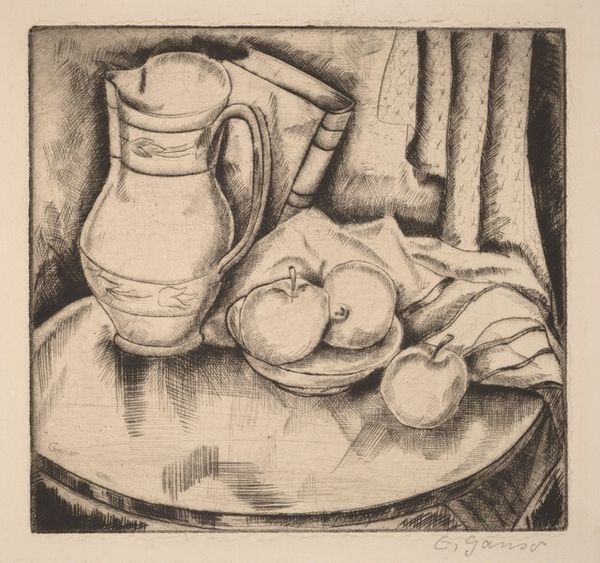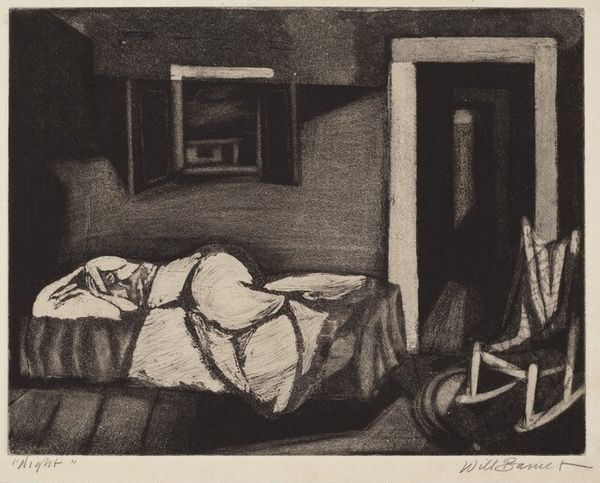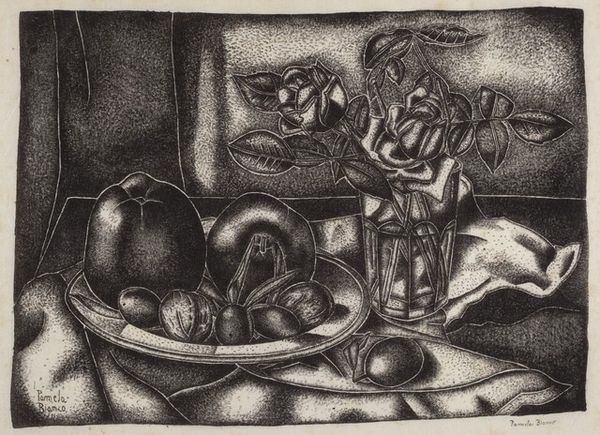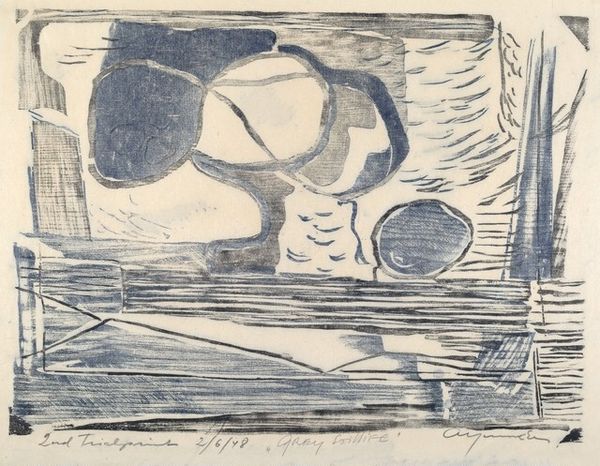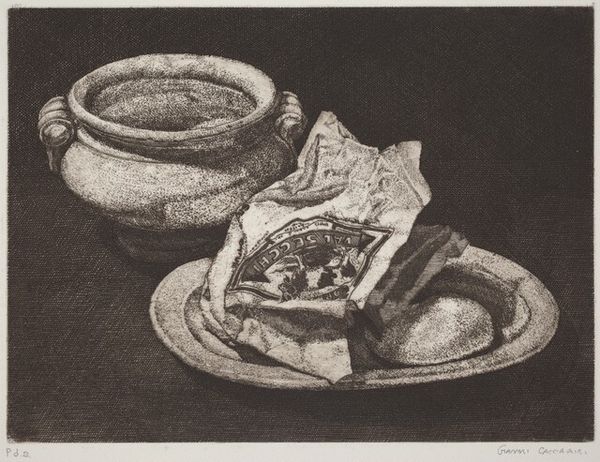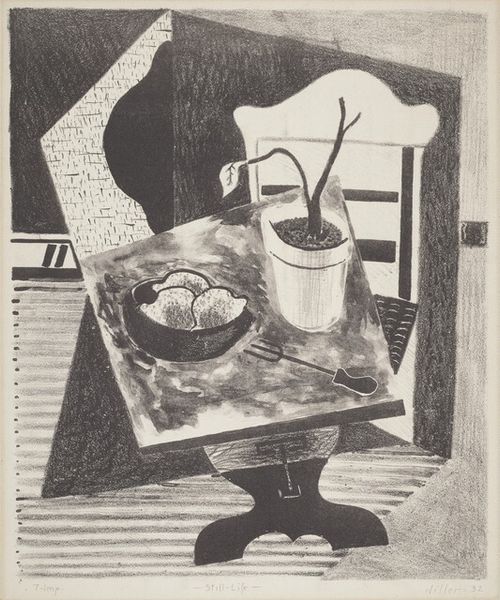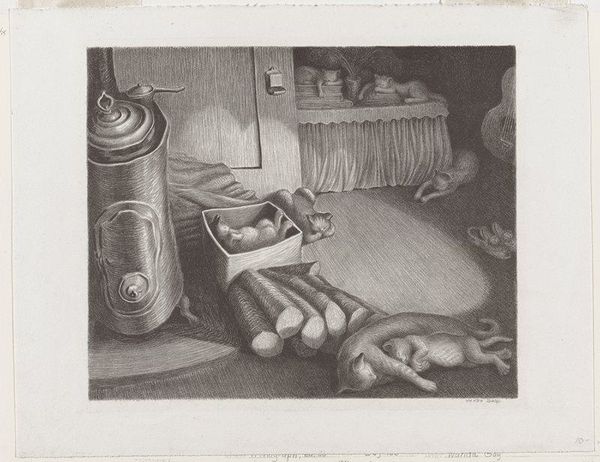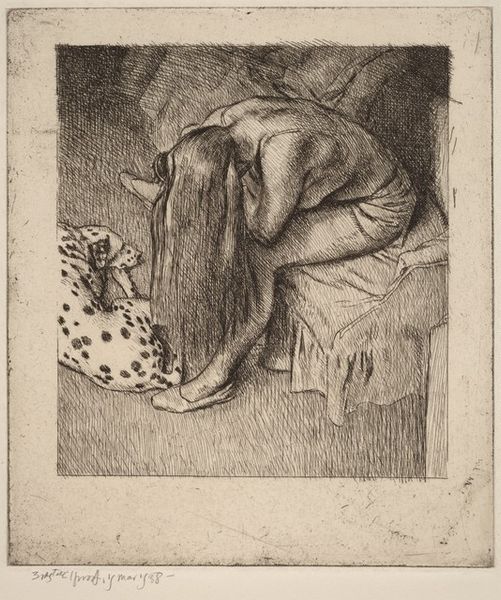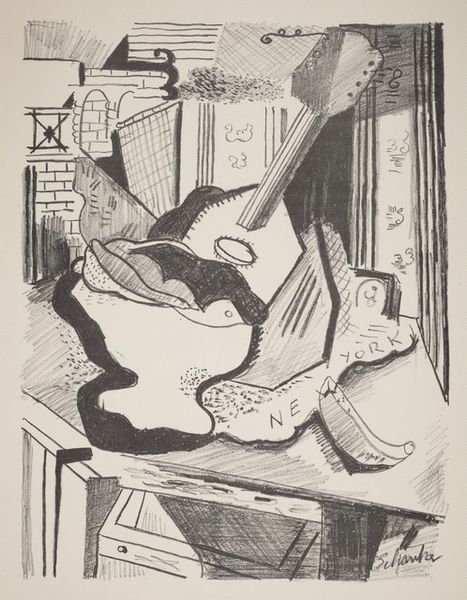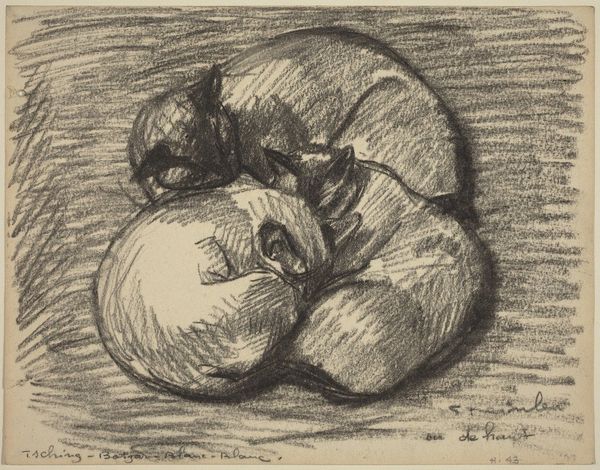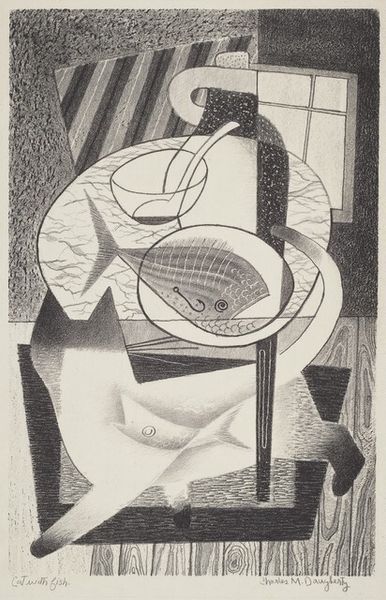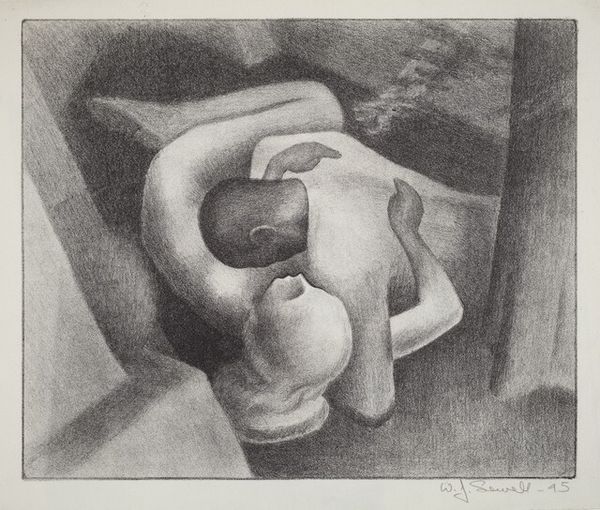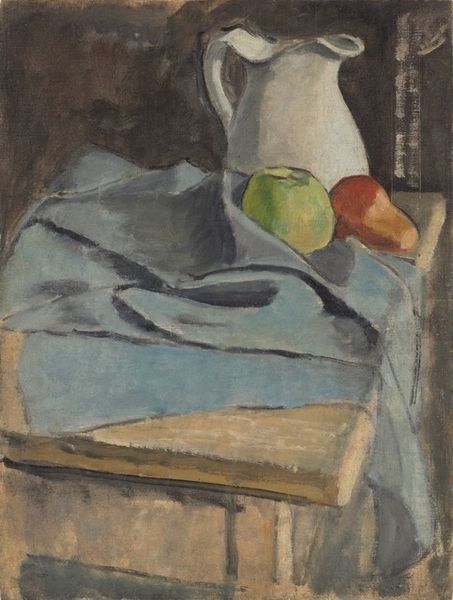
drawing, print, dry-media, pencil, graphite
#
drawing
# print
#
dry-media
#
pencil drawing
#
pencil
#
graphite
#
realism
Copyright: National Gallery of Art: CC0 1.0
Curator: We're looking at a print titled "Still Life" by Demetrius-Emmanuel Galanis. The piece seems to be crafted from graphite or pencil, maybe a combination of dry media. Editor: It’s evocative. There's a solemn stillness here, almost monastic. The restricted palette enhances a feeling of quiet contemplation. The contrast, the shadows... they weigh on the objects. Curator: It’s interesting that you mention the objects; this arrangement features traditional still-life components. We see a jug, what appears to be a simple plate with fruit, and a glass, all arranged carefully on a surface draped with fabric. Consider how the historical conventions of still life have often reflected societal values around domesticity and consumption. Editor: And yet, there’s a rejection of overt opulence, isn't there? It's deliberately muted. The monochrome removes any possibility of seductive colours that traditionally signified wealth and privilege. It reminds me how still lifes can symbolize vanitas, the transience of earthly existence. Does this play on contemporary concepts of excess? Curator: Absolutely. Think about how the genre itself, initially celebrating the possessions of the wealthy, underwent a shift. We begin to question the very idea of material possessions. This printmaking tradition made art more democratic and accessible. Could we argue that printmaking, at that time, defied some forms of elitism in art and knowledge? Editor: Certainly. And note the focus on texture. The cross-hatching captures the soft fabric, but it simultaneously brings it almost to the same material quality as the ceramic jug, blurring the expected tactile relationships. It democratizes the hierarchy of things portrayed! Curator: Indeed. We could also explore how this piece positions itself within printmaking history and its reception. Think about how prints like this were collected, circulated, and valued, in contrast to unique artworks. Editor: Looking at this composition from a contemporary view, I see how the artist engaged not just with realism, but imbued the still life with socio-political layers about production and distribution of an image. Thank you for guiding my gaze. Curator: My pleasure. Analyzing this, we’ve seen the artist created more than a collection of inanimate objects, we find they opened dialogues about the social framework.
Comments
No comments
Be the first to comment and join the conversation on the ultimate creative platform.
